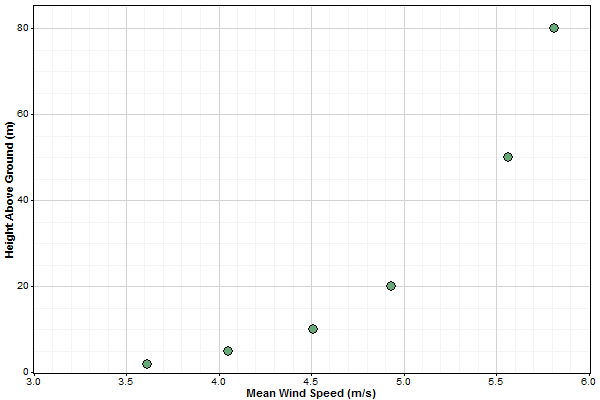
| Wind Shear |  |
In its most general sense, wind shear refers to the change in wind velocity (speed and direction) with height above ground. In Windographer, the term 'wind shear' refers specifically to speed sheer, whereas the term 'wind veer' refers to direction sheer. This article discusses speed shear.
The wind speed tends to increase with the height above ground, as in the following graph showing mean wind speeds at six measurement heights, from 2 m to 80 m above ground:

The variation in the wind speed with height above ground is called the wind shear profile. In the field of wind resource assessment, analysts typically use one of two mathematical relations to characterize the measured wind shear profile: the logarithmic law (or log law) with its parameter called the surface roughness, and the power law, with its parameter called the power law exponent.
To calculate the mean shear over a period of multiple measurements, one can use more than one approach. The article on shear aggregation methods explains.
In the Configure Dataset window you can instruct Windographer to generate a calculated data column containing the wind shear parameter in every time step of the dataset.
See also
Calculated Data Column definition